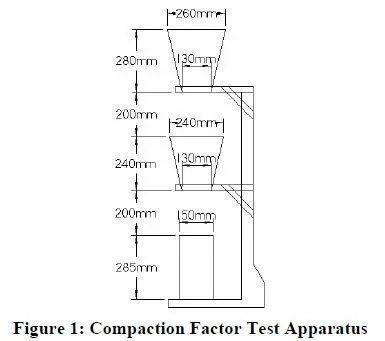Many attempts have been made to adapt traditional rotational rheometers to measure concrete. Rotational rheometers for concrete apply shear stress to concrete at different shear rates in order to measure the fundamental rheological parameters of yield stress and plastic viscosity. Rotational rheometers are most typically used exclusively in the laboratory. Although some rotational rheometers have been designed to be sufficiently small and rugged for use on jobsites, the limited availability and high cost of these devices make them impractical for regular field use. Although different rotational rheometers measure different ranges of workability, various devices are available to measure the full range of workability from low workability concrete to self-compacting concrete.
Rotational rheometers used for concrete feature parallel plate geometry, coaxial (or concentric) cylinders geometry, or impeller geometry. A parallel plate rheometer and a coaxial cylinders rheometer are depicted schematically in Figure 18. In a parallel plate rheometer, the fluid is sheared between two plates. The torque is applied and measured through one of the plates. In a coaxial cylinders rheometer, the fluid between an inner and outer cylinder is sheared. In a common arrangement of the coaxial cylinders rheometer, torque is applied to the outer cylinder while the inner cylinder measures torque. In impeller rheometers, a vane or impeller inserted into the concrete rotates at various speeds in an axial or planetary motion.
Three test methods described in this section the soil direct shear test, the mixer devices, and the fresh concrete tester incorporate some concepts of traditional rotational rheometers but do not measure concrete at different shear rates. These devices only determine consistency and provide no indication of plastic viscosity.

While traditionally rheometers have been successfully used for fine particle suspensions, concrete presents unique challenges. Unlike traditional rheometers, concrete rheometers must deal with the large size of coarse aggregates, concrete segregation, and time dependence of flow properties. For instance, in order to achieve a linear flow gradient with coaxial cylinders rheometers, the difference between the inner and outer cylinder radii should be at least five times the maximum aggregate size. Further, the ratio of the outer cylinder radius to the inner cylinder radius should be 1.0 to 1.1 (Ferraris 1999). Rheometers constructed based on these particular requirements are generally too large to be practical. Indeed, many of the problems with rotational rheometers have yet to be overcome.
